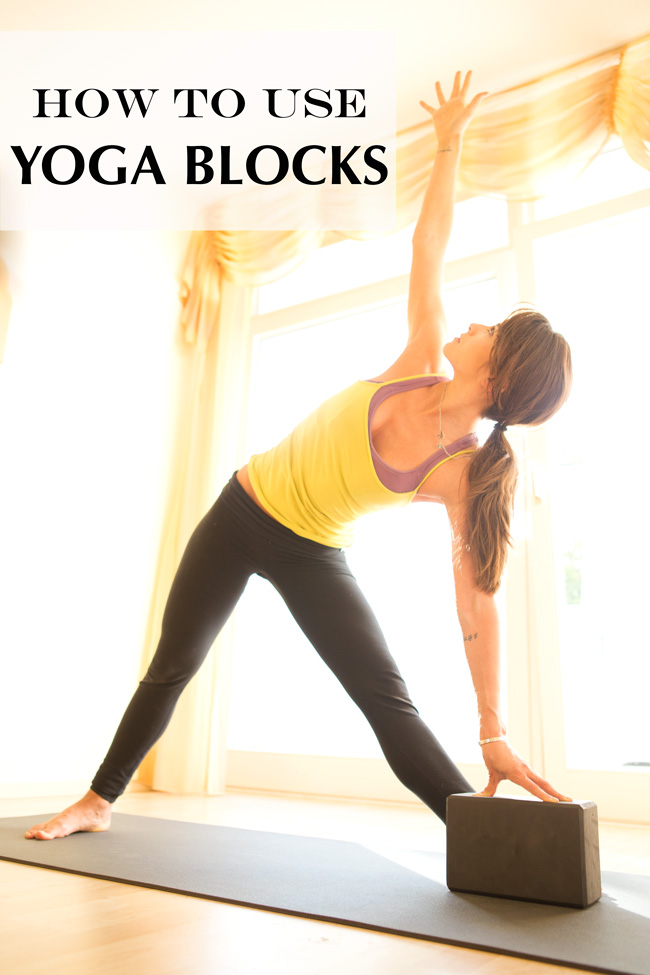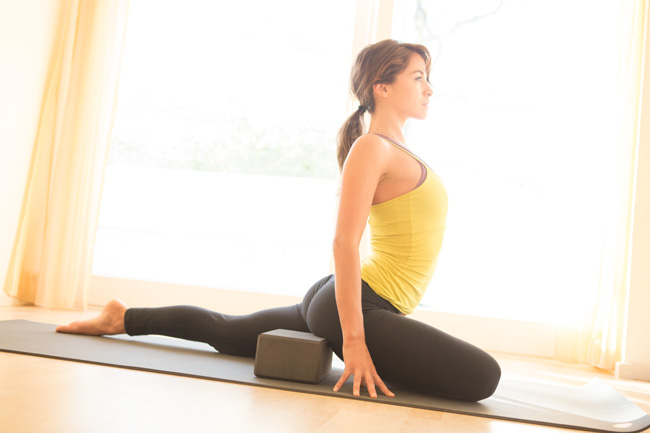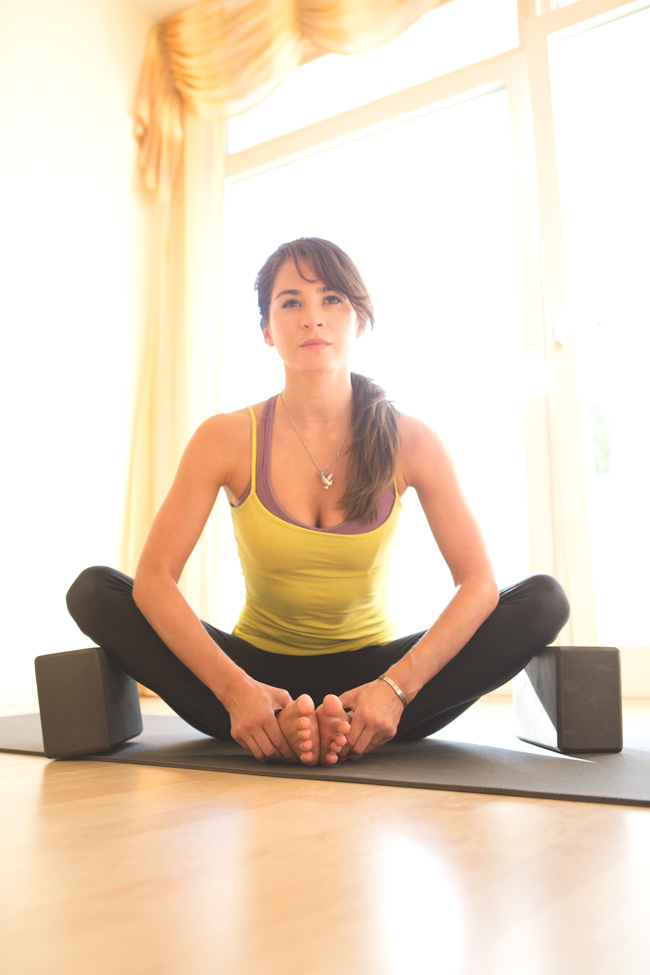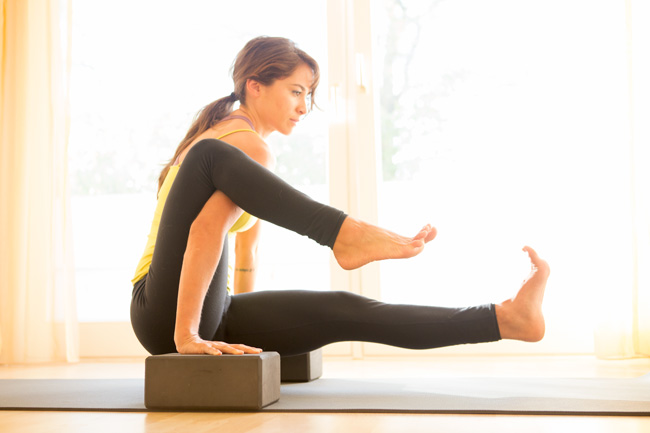*Heads up: We just launched the YBC Yoga Forum, where likeminded people are coming together to chat about everything from chaturangas to chocolates. We'd love to have you join!
Blocks can be really useful in the practice for both the beginner and seasoned yogi. For beginners, yoga blocks can be used when the flexibility isn't quite there yet, as seen in the above pose, trikonasana. For more advanced yogis, try it with revolved triangle pose. The key point to remember when you're using a block this way is to not sink or rest your hand on the block. Rather, keep the fingers spread, and use the hand like a suction. This engages the muscles in the hands and arms and in this pose will help the body find a lift which engages and lengthens the obliques and psoas.
Using a yoga block in forward fold
Using a yoga block in forward folds is another way beginners can find better alignment when the flexibility isn't there yet. Sit on the edge of the block and remove the flesh underneath your butt for a better foundation. Notice that the pelvis tilts forward a bit. Keep this tilt as you exhale and come forward. Hands can be on the shins or the feet.
Pigeon pose with a yoga block
Using a block in pigeon pose can be helpful when hip or knee flexibility isn't there or if the hip rotation or knee rotation isn't available (usually due to bone compression in the joints). Put the edge of the block directly under the sit bone. Just like with forward fold, the block encourages a forward tilt of the pelvis which brings the body into proper alignment. Heart comes forward, root the fingertips into the ground under the shoulders, and spin the inner thigh of the back leg up. This is a fantastic pose if you're feeling tight after sitting for a long time.
Yoga block with bridge pose.
Using a block with bridge pose will encourage the inner thighs to draw toward one another. As they do, this brings the knees in alignment, and encourages a lift in the pelvis. You can also do this with full wheel pose, and the block will help to protect the knee joints.
Blocks with seated poses
People with tight groins can can also use blocks in seated poses like baddha konasana. In this case, the blocks support the knees so the weight of the legs doesn't pull too hard on the inner thighs. You can flip the blocks to find the correct height for how much support you need.
Yoga blocks for more advanced poses.
I particularly like using blocks when it comes to arm balances. This is a prep and core development pose for astavakrasana arm balance. If I were to do it with my hands on the mat, I wouldn't get a lot of height because my core isn't that strong (yet!). By using the blocks, I have room so that when I inevitably swing down, my butt won't hit the mat and I can instantly re-engage the core and pull myself back into position. There's a instructional video for this here.
Which yoga block to buy?
There are a lot of yoga blocks on the market and it really depends what you're looking for. The blocks in this post are these, and I think they're a decent price point. They are foam, which is not a natural resource, and I have had them for two years and they have a couple indents and scrapes. They're lightweight (great for travel!), but the wear and tear does show.
At a higher price point are the bamboo yoga blocks. The advantage here is that they're pretty durable and they're all natural. The disadvantage is that it costs $18.00 for one.
Even higher is the cork yoga block. The advantage is that they're very durable and are all natural. The cork blocks I've seen have been pretty solid- not exactly heavy but definitely not something you'd want to travel with. However, on the plus side, this means they provide a solid foundation and they're not going to slip anywhere. The only disadvantage I see is that on amazon they're going for $27.00 each. (Update! On Gaiam they're 2 for $25.00!)
Whatever brand or type you choose, I recommend buying two so you can use them for seated postures and arm balance work as well.
PS- How do you feel about flowery language in yoga class?






